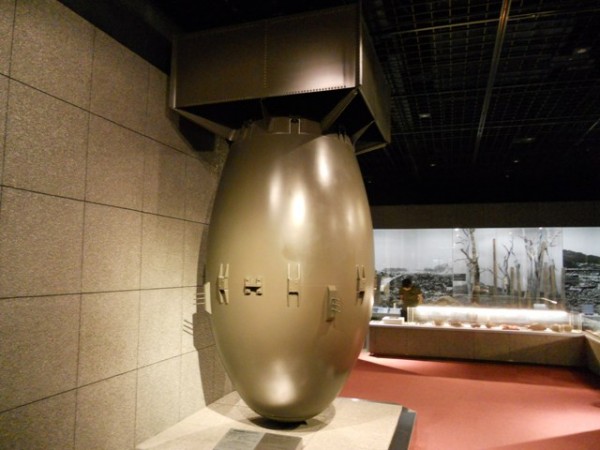
'Fat Man', a model of the bomb dropped on Nagasaki
Most of us would never have heard of Nagasaki had it not been for a few rogue clouds. On the morning of August 9th 1945 an American B-29 bomber carrying a nuclear bomb with the code name “Fat Man” was circling over the city of Kokura, its intended target. A late covering of cloud had obscured the city from the bomber crew and was preventing them from releasing their lethal cargo.
Running short of fuel they switched to their secondary target, the industrial port city of Nagasaki. Even Nagasaki may have been spared, with more clouds covering the city and forcing the pilots to consider dropping their bomb at sea. But fortunately for the crew (and tragically for the city’s inhabitants) a last-minute break in cloud cover gave the crew the opportunity they needed.
At 11.02 the second American atomic bomb to be dropped on a Japanese city detonated over the northern Nagasaki suburb of Urakami. That the hypocentre was around 3km north of the intended point probably saved many lives although 75,000 were killed instantly or as a direct result of the bomb. The city lies at the bottom of a valley and many of Nagasaki’s buildings were shielded from the blast thanks to the city’s topography.
A visit to the Atomic Bomb Museum in Nagasaki provides a powerful insight into the events of 1945. Visitors are shown ruins from Urakami Cathedral which stood only a short distance from the hypocentre and where mass was taking place at the moment the bomb fell. All were killed and the building was completely destroyed, but a few poignant personal objects were later recovered.
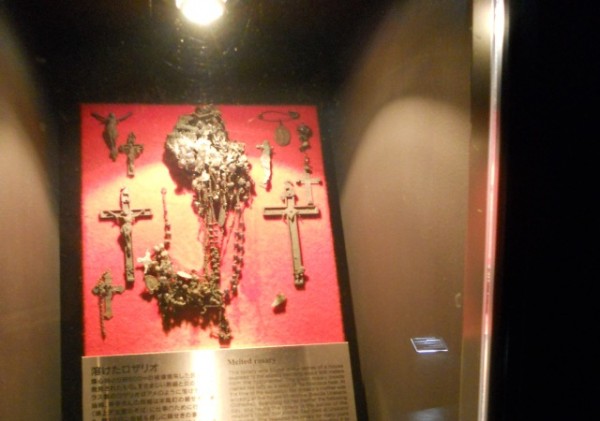
Rosaries and crucifixes recovered from Urakami Cathedral
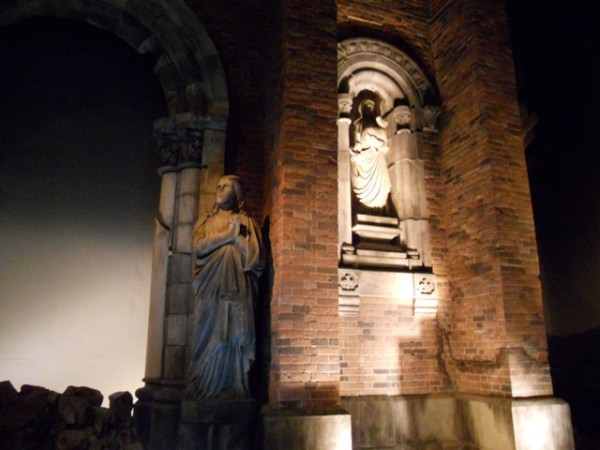
Part of the walls of Urakami Cathedral
The museum then focuses on the lives of those affected by the bomb. It recalls stories of the people who survived and the hellish aftermath that the city became in the subsequent days. The accounts are difficult to absorb, yet from many of the stories a spirit of hope and resilience shines through, along with constant pleas for future world peace. The exhibits of the final hall looks at the global nuclear arms race, the effects of nuclear testing in the Pacific and questions the role of a nuclear deterrent as a force for world peace in the future.
Outside of the museum, the hypocentre is clearly marked with a black stone memorial in a small enclosed park, while the newly built Urakami Cathedral is worth a visit. A few original artifacts are kept outside the modern building, while to the side a large section of the church that fell onto a grass bank in the atomic destruction has been left untouched.
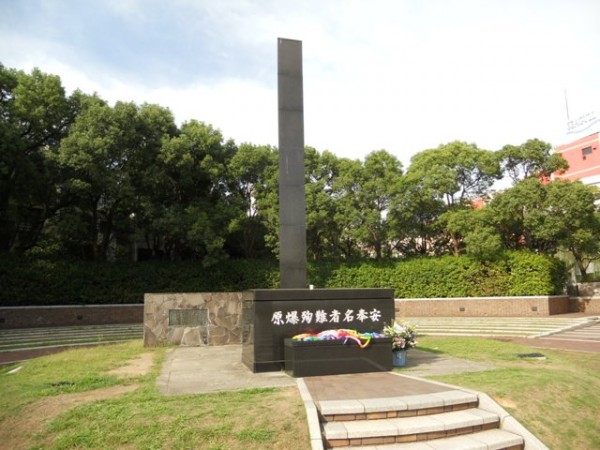
The stone marking the hypocentre of the Nagasaki atomic bomb
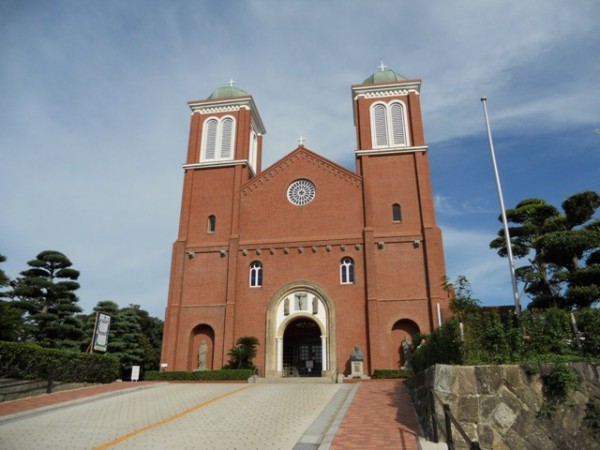
Urakami Cathedral
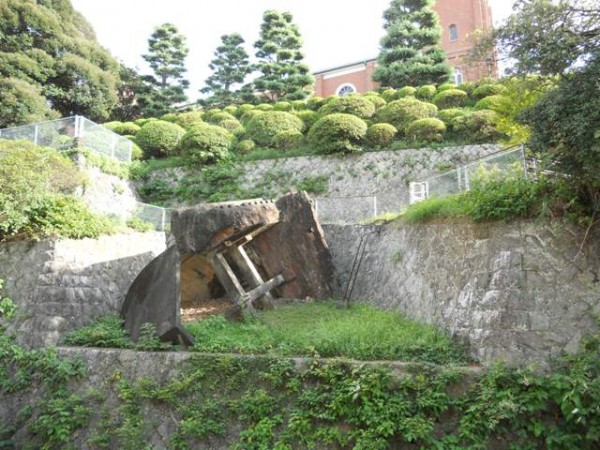
Ruins of the old cathedral with the new building above
The Nagasaki Peace Park is dominated by a giant statue created by sculptor Seibou Kitamura. Around the park are various memorials given to the city as an gift of friendship, mainly by the ex-communist states of Eastern Europe.
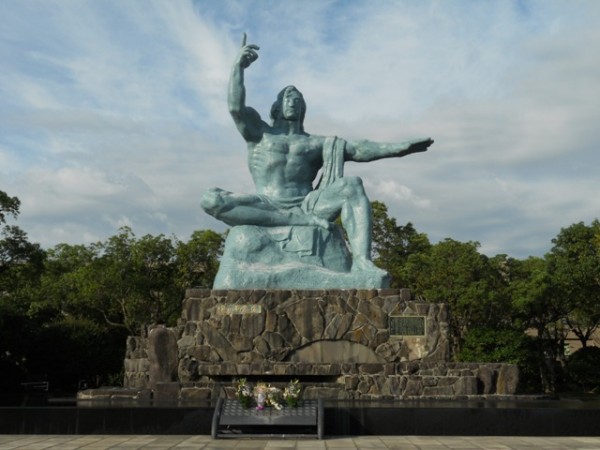
The Peace Memorial by Seibou Kitamura
It is only natural to compare a visit to Nagasaki with one to Hiroshima, especially having visited the Hiroshima Peace Memorial only two days earlier. The area around the Hiroshima Peace Park is wide and flat giving a sense of space and openness. The Nagasaki sites on the other hand are dotted around the slopes of Urakami and are very much within a residential area. Walk from the museum to the Peace Park or to the cathedral and you’ll be passing homes, offices and busy streets. Everything appears, on the surface at least, reassuringly normal. While the Hiroshima site has developed buildings and an infrastructure to cater for the huge crowds that visit, Nagasaki feels a lot more intimate and an integral part of the surrounding modern city.
I liked Nagasaki as a city very much. Beyond the atomic bomb monuments it is a very pleasant port city with a trendy harbour area, several grand old buildings and plenty of evidence of its strong multi-faith roots (the city had been the centre of Japanese Christianity for many hundreds of years and had withstood a lengthy period of persecution).
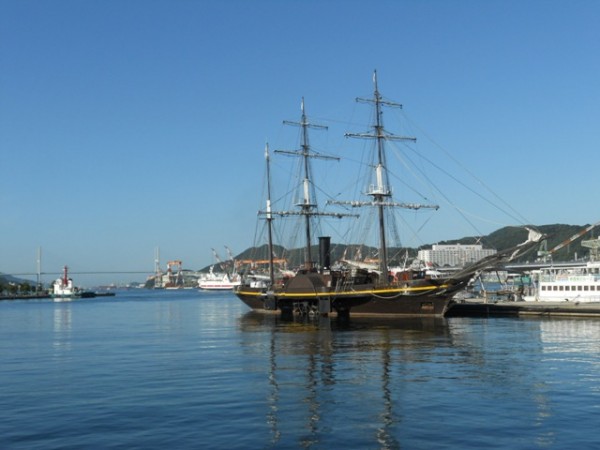
Nagasaki Harbour
Within three days we had been to Hiroshima and Nagasaki, the two places in the world where humans have used their scientific knowledge to unleash an instrument of the most devastating power on their fellow men. As our train pulled out of Nagasaki station I’m sure I wasn’t the first to reflect on the hope that I never have the opportunity to visit another place that has suffered the fate shared by these two Japanese cities.




